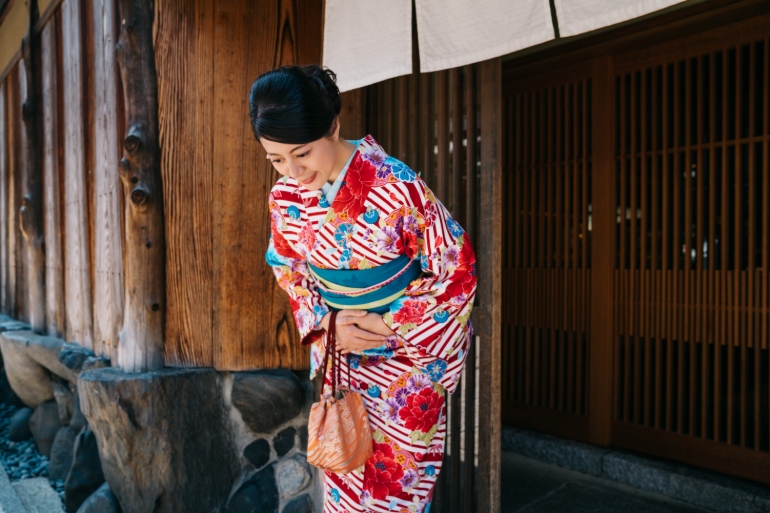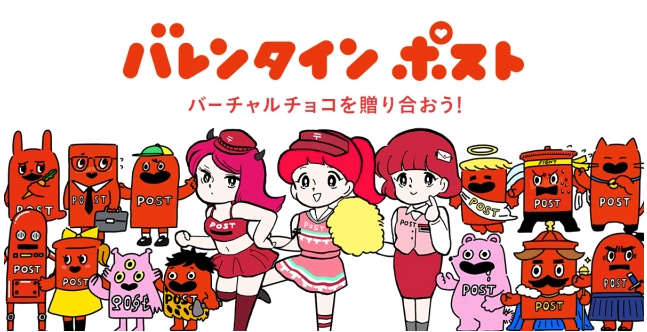It has been said that Japan is slow to respond to the global digital shift. Many have also criticised how businesses, especially large corporations with traditional internal structures, are not equipped to meet changing consumer behavior in the digital era. However, the reality is that digital advertising is on the rise in Japan, and the widespread usage of content marketing, in its various forms, is somewhat inevitable.
There’s no doubt that businesses operating here face unique obstacles when it comes to fully embracing content marketing (some of which we’ll explore shortly). Yet,as one of the most effective ways to leverage digital marketing to connect with wider audiences, it is likely it will become just as prevalent in Japan as it is in other nations around the world.
In this blog, we explore the role and relevance of content marketing in Japan and present a few ways it has already been successful in a country famed for its love of conventional advertising. We’ll also take a look at some current and future trends, and consider where Japan fits into the global movement towards more inbound marketing that pulls users in through engaging content.
Table of Contents
This is one of our longer pieces so feel free to skip to the section most relevant to you!
- Content Marketing in Japan
- Japanese Content Marketing Trends
- Content Marketing in Action – A Few Great Examples
- Integrating Content Marketing into Your Strategy
- Building Your Next Content Marketing Strategy
Content Marketing in Japan
Most of us have already experienced the significant shift away from more traditional forms of media like TV, radio, magazines, and billboards. In their place, a vibrant world of online platforms and digital spaces has emerged to offer individuals highly personalized and engaging content. In Japan, the same movement is taking place, albeit at a slightly slower pace.
Television vs. Internet Advertising Spend in Japan
| Year | Television Advertising (¥ billion) | Internet Advertising (¥ billion) |
| 2015 | 1,932.3 | 1,159.4 |
| 2016 | 1965.7 | 1,310.0 |
| 2017 | 1,947.8 | 1,509.4 |
| 2018 | 1,912.3 | 1,758.9 |
| 2019 | 1,861.2 | 2,104.8 |
Source: Dentsu
SOCIAL NETWORK USAGE IN JAPAN BY % OF POPULATION
*Tap or hover on the graph below to see details.
*2018 Instagram data reported in November 2018
**2018 Facebook data reported in September 2017
***2018 Twitter data reported in Dec 2018
Traditional Marketing vs. Content Marketing

For younger generations in Japan, places like TikTok, LINE, Instagram, and Twitter are now the best available platforms you can use to reach your target audience. A number of other important characteristics and distinctions make content marketing a better choice when deciding on how you’re going to carry out your Japanese marketing activities.
| Traditional Marketing | Content Marketing |
| Print ads, TV ads, press releases, banner ads, billboards, telemarketing, direct mail | Videos, infographics, guides, ebooks, interactive experiences, blog posts, presentations, photographs, commissioned art, podcasts, case studies |
| Interrupts instead of offering value | Provides value in the hope of creating loyalty |
| One-way communication | Two-way communication |
| Captures people’s attention momentarily in order to showcase a product’ or service’s benefits | Invites, attracts, educates, and entertains people to build long-term relationships |
| Print ads, TV ads, press releases, banner ads, billboards, telemarketing, direct mail | Videos, infographics, guides, ebooks, interactive experiences, blog posts, presentations, photographs, commissioned art, podcasts, case studies |
| Tends to be more expensive within saturated markets of old media | Often lower upfront costs and barrier to entry |
| Less people are consuming TV, Radio, and magazine content each year | More people are consuming digital content each year |
What Has Stopped Japanese Content Marketing from Growing?
The Japanese work environment has strong cultural tendencies. One of the effects of this is that sometimes there’s less room for new ideas to grow — especially those that sacrifice predictability and consistency. Other obstacles that have prevented the wider uptake of digital advertising through content marketing include:
- A lack of homegrown digital marketing talent trained and/or experienced in handling large-scale content marketing initiatives.
- Important marketing strategies and budget decisions are typically made by older employees in Japan, who often have limited experience with new digital devices or platforms.
- The digital world is always changing, and it can be difficult for companies to prioritize their resources and efforts while providing sufficient accountability to their marketing departments.
- Company departments and organizational processes have been optimized for conventional marketing, and transforming them on a large-scale would be costly.
- Japan marketing is typically pay-to-play. With content marketing’s often lower initial financial commitment and less tangible (and sometimes immediate) results, it isn’t perceived as a productive route to achieving commercial results.
HB Pro Tip: Content marketing often costs less, but this doesn’t mean it’s not effective. Studies such as the one carried out by DemandMetric have shown how content marketing costs around 62% less than traditional marketing, yet can generate about 3 times as many leads.
Why Do Japanese Companies Need Content Marketing?
Whether it’s meeting consumer demand for more engaging, usable, and personalized content, or keeping pace with competitors who have already found success through their own content marketing campaigns, the need for newer marketing strategies is growing rapidly.
- Helps educate your audience about your services and products without seeming too ‘salesy’, providing a vital step in a customer’s journey towards conversion.
- Useful, engaging, and valuable content is more engaging than traditional direct marketing.
Offers a way for you to deliver personalized content to your audience, and increase demand across key demographic segments in Japan (especially younger groups who consume more social media than TV content). - Allows you to foster a sense of community around your brand and build online spaces where customers can share their experiences with others.
- Can boost your search rankings when combined with a robust SEO strategy, improving your online brand presence.
Digital marketing, when used properly, generates clear data and KPIs that can offer more clarity around campaign performance than many traditional media options.
Japanese Content Marketing Trends

The rise of digital advertising has been taking place for several years, and a number of important developments highlight the direction both content marketing and digital marketing in general are going.
Greater Capacity for Handling Digital Marketing
Even if the motivation is there, many companies simply don’t have the resources or requisite knowledge to successfully implement a digital marketing strategy. What is needed, especially for more traditional industries, is a significant digital transformation. And to an extent, this is starting to happen now.
Whether it’s new teams being formed, partnerships with digital marketing agencies arranged, or budgets being redistributed, major undertakings have been made by Japanese organizations to adapt to the times. This is a trend that is likely to continue for many years, with even the biggest and most successful Japanese brands either looking to build internal digital marketing capacity, or seek external support to help them with the growing need for digitization.
Arguably, younger companies and inbound foriegn enterprises will have an easier job implementing new digital marketing initiatives. While they may lack the “weight” or brand presence of more established companies, they’ll be less burdened by rigid hierarchical structures; existing businesses models supported through traditional marketing, and a digital skills gap.
Prioritization of Content in Social Media
To see any significant return and actually reach your desired target audiences, brands need to invest in social media marketing in Japan today. It’s true that success largely relies on paid advertising, but the often left out aspect of this approach is the inherent need for high quality content, and strong content marketing strategies to anchor your paid social media activities.
You may be able to allocate significant time, energy, and money to running a great PPC campaign on Facebook, but without some great content to draw in your audience, your strategy isn’t complete.
Whether it’s building up an aesthetically beautiful and brand-consistent hub on your company’s Instagram page, or curating a collection of insightful articles or video tutorials you can showcase through your paid social posts, more companies need to focus on generating unique, original, and quality content to support their social campaigns.
Learn About Japan’s Top Social Media Networks and How to Use them
Greater Personalization

Despite what you might have heard, Japanese culture isn’t all about conformity. Like every other nation in the world, there are burgeoning, unsatisfied communities that are hungry for highly personalized content that speaks to them as individuals. Equally, the frustration felt when receiving generic, non-relevant content is just as real in Japan as it is elsewhere. According to a study by Segment, around 70% of shoppers on average express some level of frustration when their experience is impersonal.
In order to succeed, brands need to understand this, and realise that content creation needs to be performed within the context of individual motivations, aspirations, and characteristics. The reason content marketing is so important is that it lets you avoid generic impersonal messages aimed at the masses, and better meets the needs of the individual.
For example, if some of your audience are seeking knowledge, content must be created to educate and inform them. Or if your users crave entertainment and excitement, then focus on building interactive digital experiences. It’s all about allowing users to pursue their individual goals and desires.
HB Pro Tip: We’ve learned that the key to personalization is good data. Finding ways to learn from your customers will help you drive personalization, and subsequently conversions. When building content marketing strategies for our clients, we look closely at our social media metrics to discover what users like and enjoy. Which messaging pillars did users like the most? Which graphics and themes received the most engagement? The answers to these questions help us create new blogs, videos, or infographics that better match user interests.
An Integrated Customer Experience

Customer experience is becoming the major differentiator between brands today. Especially in segments where price or product alone isn’t enough to put you ahead. According to a report by PWC, 86% of buyers are willing to pay more for a great customer experience and 32% of consumers will walk away from a brand they love after just one bad experience.
If you’ve ever spent any significant time in Japan, you’ll know how serious the dedication to providing quality customer service is. If you’re looking to keep up with your Japanese competitors, you’ll need to embrace this trend and pay a great deal of attention to the various touch points customers encounter in their purchasing journey, right through from brand awareness and consideration to conversion — it’s all part of an integrated customer experience.
HB Pro Tip: We’ve seen many companies struggle to build robust and comprehensive customer experience journeys for their customers when entering the Japanese market for the first time. As well as being at a disadvantage when it comes to understanding exactly what your local audience desires, there is a great deal of competition from domestic brands who offer similar products or services. We recommend prioritizing your localization efforts with teams of native speakers who have existing knowledge of your market if you’re going to have a chance of competing on the customer experience level.
Content Marketing In Action – A Few Great Examples
When you start to look for it, you’ll see content marketing everywhere in Japan. Both global brands and startups already rely on things like blog development, video content, infographics, and social media to reach their audiences. Below are some of our favourite examples of successful Japanese content marketing initiatives over the last couple of years.
1. TRAIN’ing with East Japan Railway

Video has become the most commonly used format in content marketing today, overtaking blogs and infographics, according to HubSpot. And we’ve seen all types of brands and organizations rely on it for greater exposure, including East Japan Railway.
Teaming up with the Japanese fitness club Jexer, they developed a unique app aimed at promoting the mental and physical health of commuters through environment-dependent exercises (which in itself a great content marketing initiative). The app’s promotional video features instructions, guidance, and advice to citizens who regularly use Japan’s packed trains, explaining exactly how the app should be used. It showcases a unique effort to transform a world of transport into a place for growth, and is an admirable effort in engaging large cross sections of Japanese society.
2. Vogue Japan Blog

It’s easy to underplay the role of the blog. But when your efforts go beyond simply creating blog content for the sake of it, and instead focus on generating genuinely unique and engaging editorial (as well as providing online spaces for users to submit their own content), the results can be impressive. Vogue Japan has shown us this with their high traffic and colorful blog featuring a collection of interesting, entertaining, and insightful articles on topics ranging from beauty and fashion, to art and culture.
3. KitKat Japan Social Campaigns

The KitKat brand is a true success story when it comes to connecting with Japanese audiences. Whether it’s releasing imaginative or limited edition seasonal flavors like Matcha Green Tea, red bean or Sakura (cherry blossom); or their creative translation of “Kit Kat” (which phonetically mirrors the phrase “kitto katsu”) into several catchy Japanese slogans like “never fail”, Kit Kat are a great example of adapting to meet the exacting demands of Japanese consumers.
Nestle KitKat Japan have also delivered some strong social media campaigns over the years, including the Virtual KitKat campaign in 2018 around Valentines Day, which allowed people to send and request virtual KitKats with their friends through Facebook, Twitter, and Line using 16 unique animated characters to select from. The campaign allowed users to win free KitKats if they gained a certain amount of virtual tokens and garnered over 150m shares!
4. NHK Anipara Paralympic Promotion Animated Series

NHK, Japan’s largest broadcaster and news outlet, collaborated with manga artist Satoru Hiura to create her amazing stories about Paralympic athletes. The series, featuring short episodes with original characters, explores important issues about the sporting event and offers an engaging and educational lesson on how to celebrate diversity, ultimately bringing huge awareness to the sport as well as NHK, who streams the episodes on demand through their platform.
Integrating Content Marketing into Your Strategy
As more and more businesses increase their digital advertising spend, the competition across platforms that once proved fruitful will become harder and harder to succeed on. Having a cohesive multi-channel approach is crucial. While Google Ads and PPC may have been enough to meet your targets up until now, what happens when more businesses in your sector increase their spend in these areas and start directly competing against you on keywords or audiences?
To secure decent returns going forward, brands must now build more holistic digital marketing strategies that combine both paid and non-paid channels, with a collection of complementary content marketing and SEO efforts.
HB Pro Tip: If you’ve seen great success on one channel, such as Facebook or Instagram, don’t develop tunnel vision. Protect your returns by branching out from your strongest platform to areas of future growth. As digital space becomes more saturated in Japan, you’ll need more ways than one to meet your digital advertising needs. And even if you think your position is solid, a little bit of diversification is always a good thing.
Integrating Japanese Content Marketing with SEO

SEO and content marketing shouldn’t be separated in the way many companies like to do, as if they are two very mutually exclusive activities. The truth is, while content marketing is a broader approach, and SEO is inherently grounded in the technical, they can be seamlessly blended and overlapped.
For instance, the best way to apply SEO is through engaging, unique, original, and informative content. And ticking all the boxes of good SEO can be done through a similar adherence to content marketing best practices, such as creating content that people will genuinely enjoy and meeting the interests and needs of specific demographics through visual and written content.
There’s no need to pay a backlink agency to improve your rankings when your content is simply amazing. Focus on your content and people will naturally want to link back to it. That’s what good content marketing does.
HB Pro Tip: Clients often look to tangible KPIs as proof of SEO success, such as keyword rankings, backlinks, and traffic. Content marketing is one of the best ways to achieve all of these things. As long as you are focusing on generating top quality content that people want to consume (whether that’s video, infographics, or blogs), there’s no need to get bogged down in the distinctions between content marketing and SEO.
Building Your Next Content Marketing Strategy
Japanese content marketing is becoming increasingly recognised as an essential way to build brand awareness, improve the customer experience, and create more personalized customer journeys that convert users. However, the overarching theme to this blog, and many of our other articles in fact, is that a comprehensive, multi-channel marketing plan for Japan is always superior to strategies that disproportionately invest in single channels alone.
Ultimately, brands should aim to build diverse, multi-channel campaigns that take into consideration unique platform benefits and use this to their advantage when creating more personalized and relevant messages for their audiences. If you do this well, your customer receives the most suitable message at the perfect time, on the perfect channel — whether they’re typing a search query into Google or browsing Instagram on the train to work.